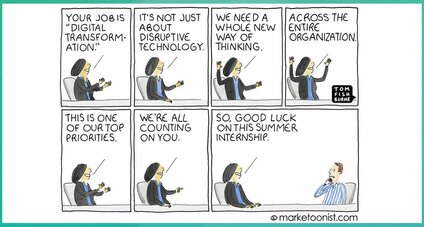
How to work together effectively in your home office
Remote communication has some dangers. Here are a few simple tips on how to avoid them - and how you can weld your team together even from a distance.
The digital age has ushered in a revolution in communication that is equivalent to the revolution associated with the invention of the printing press. It changes the way we speak and it affects what we actually listen to. Because the jumble of information that comes our way can lead to frequent misunderstandings and confusion. According to recent estimates, almost 20 percent of Europeans work from home, while almost 50 percent are involved in remote or virtual teamwork. This ongoing change requires a new spectrum of behaviour and skills. What is missing in our texts, e-mails, conference calls and other digital communication media? - It's body language! The tone of a text or the formality of an email can confuse even our closest friends. These misinterpretations create a fear that can be costly. This can affect morale, commitment, productivity and innovation. Remote communication can also influence the speed of our conversations. The delay between our messages can delay or hide emotional reactions to our comments. How many times have you written an email and immediately after sending it you had doubts about how it would be perceived? Even if we have become accustomed to this type of asynchronous interaction, it can still conflict with our normal rules for social interaction. If we don't get an immediate answer, we can be distracted, question ourselves or even become frustrated with our teams. First of all, it should be remembered that there are three types of distance when working together over long distances: physical, operational and affinity. The best way for managers to improve team performance is to focus on reducing affinity distance. Try to shift most distance communication to regular video calls, which are a much better way to build a relationship and create empathy than email or voice calls. And design virtual team building rituals that allow people to interact regularly and experience their teamwork skills in action. If teams communicate well from a distance and use their strengths, they can actually gain an advantage over teams in a common location.
Here are some good practices that need to be mastered:
Express what you mean. In our efforts to be efficient, we sometimes use fewer words to communicate. But such brevity can mean that the rest of the team is wasting time interpreting your messages. Do not assume that others will understand your keywords and your shorthand. Spend time communicating with the intention to be very clear - regardless of the medium. You can never be too clear, but it is very easy to be less clear than you want.
Do not bombard your team with messages. Do you follow up a task by e-mail, text and telephone? Do you tend to ask people if they have received your earlier message? The abuse of these forms of communication can be a form of digital dominance, a relentless and unpleasant form of harassment. The medium you choose places different demands on the recipient's time. Using them all for the same message is not effective. Choose your digital volume carefully.
Set communication standards. Remote teams must create new norms that provide clarity in communication. Individual teams can set their own standards - e.g. the use or non-use of tools. And there may also be standards at the individual level, such as preferred reaction time, writing style and tone of voice. For example, some people prefer short and quick messages, while others prefer long and detailed answers; people also differ in their preference and tolerance for humour and information content. While we often tend to see human predictability as a shortcoming, few qualities are more in demand at work, especially in virtual cooperation. We are all unique, but our consistent behaviour helps others to predict our actions and in turn helps them to understand us - and we all benefit from being understood. You can make this easier for others by establishing clear personal etiquette and following it consistently.
See the hidden possibilities in written communication. Staying behind a screen can create new opportunities for certain team members and create space for those who may be less inclined to express themselves in groups. Text-based communication puts less emphasis on interpersonal skills and physical appearance and provides an effective way to share power and decisions. Research shows that introverted individuals are less inhibited in online interactions than in offline conversations. The absence of body language does not necessarily mean that we do not reveal more than we intend to. There is still a lot of metacommunication and virtual leaks that occur in digital environments; you just have to be careful to read between the lines.
Create space to celebrate. Friendliness like birthday cake is also important for remote teams. Creating virtual spaces and rituals for celebration and socializing can strengthen relationships and lay the foundation for future collaboration. Find ways to shorten the affinity distance. Find your own unique way to create team spaces for social connections. How you do it is less important than that you do it. As more and more of our interactions are digital, we will continue to experience new forms of miscommunication and misunderstanding. The solution will not come from new technologies. Instead, the solution lies in understanding the new rules of the game.










